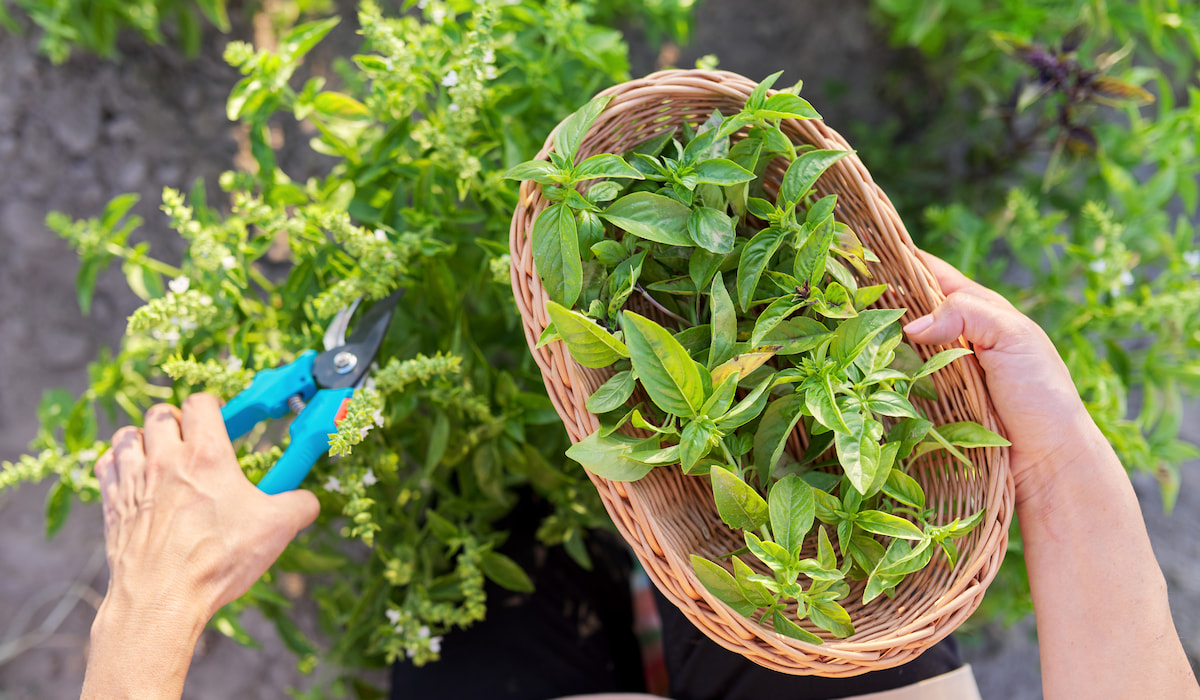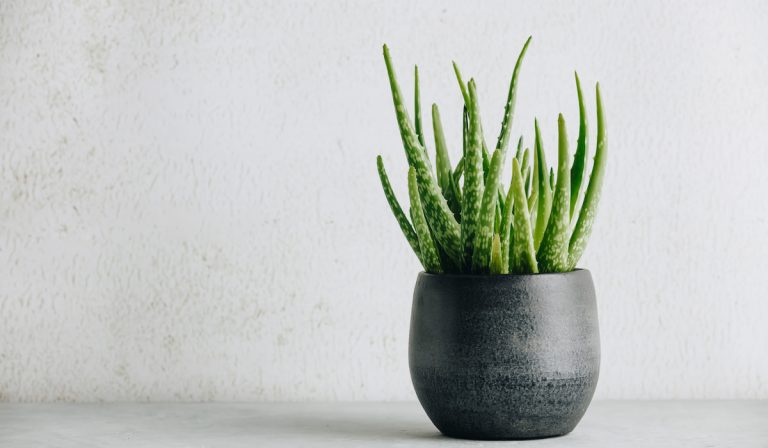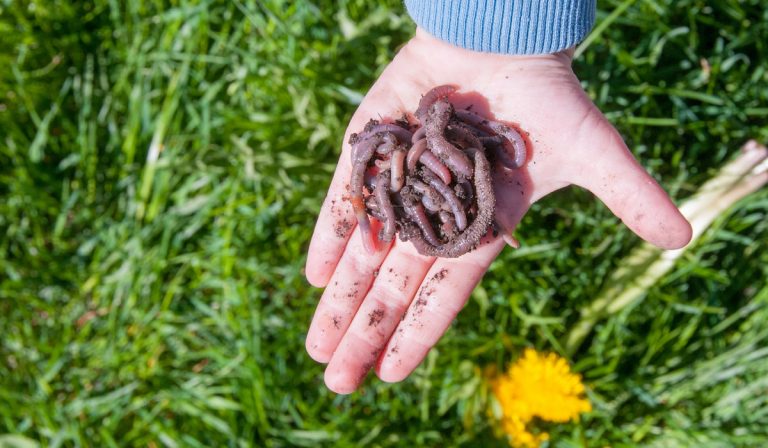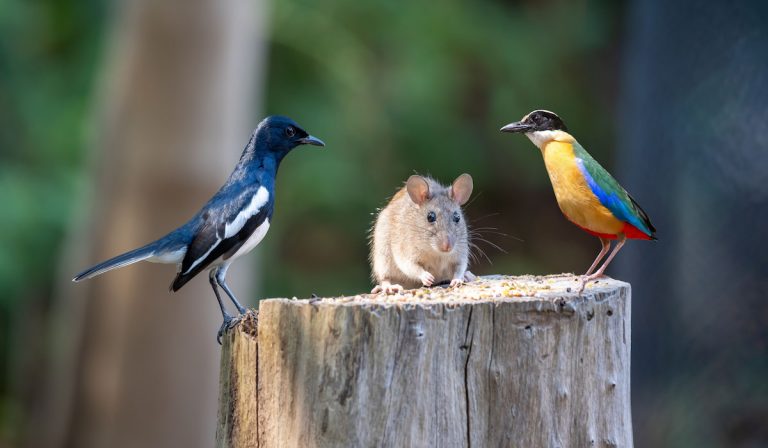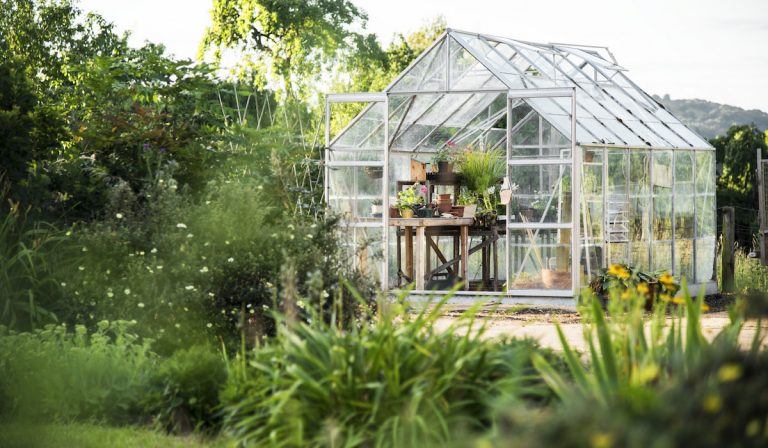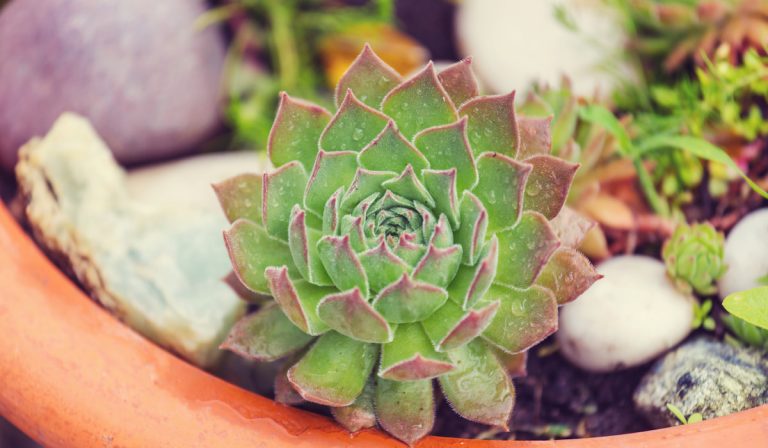9 Tips for Pruning Basil so It Grows Back
Apart from promoting regrowth, pruning basil makes for improved flavor. But if you wait too long before pruning or do not prune correctly, you will not get the that better flavor.
With the proper pruning techniques and the right care, one basil plant can produce enough leaves to make a jar of pesto.
The leaves of a basil plant are pretty delicate. Any slight bruising on the leaves will release an aroma of essential oils, which dissipates quickly. This is why you should take a lot of care when pruning your basil leaves.
Your curiosity to learn about the best way to prune basil got you here. Here are all the details you need to do it the right way.
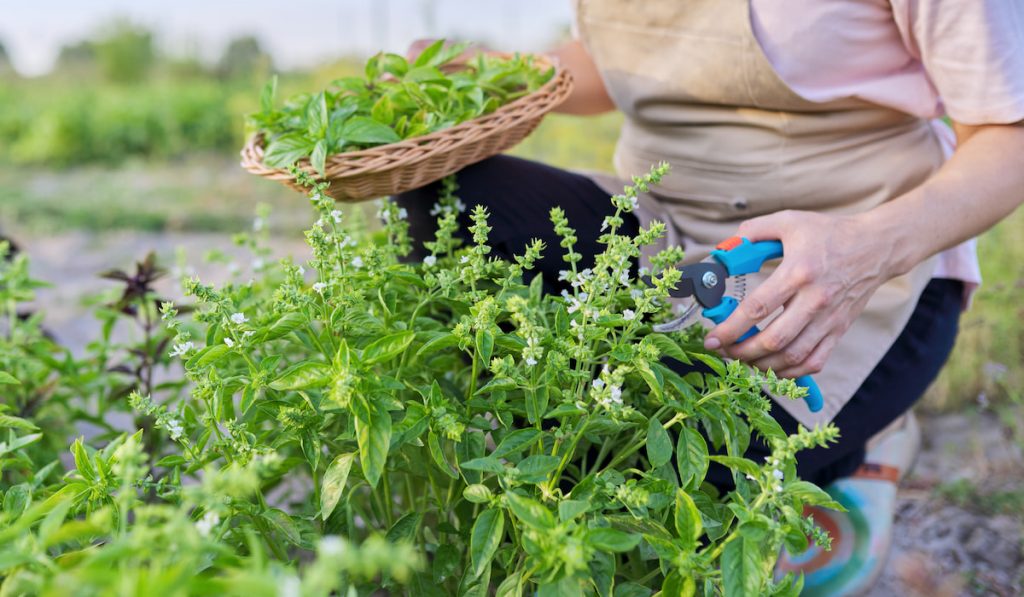
Table of Contents
9 Tips for Pruning Basil
The tips below will help your basil grow back and keep it as healthy as possible:
- Before you prune basil for the first time, you have to wait until the plant grows to about 6 inches tall. However, after pruning basil for the first time, visit your garden every 2-3 weeks to prune your basil. Pruning the plant when it is still young helps to maximize the plant’s growth.
- When pruning your basil, remember not to touch the set of leaves located at the plant’s base. These leaves are the last growth production factory and food source of your plant. When you cut them off, the plants may die.
- The proper tool for cutting back basil is a sharp pruning shear. Using high-quality shears will not scar your basil with several tears. The shears will also create well-defined cuts.
- If you use your hands to prune or the shears are not sharp enough, it might make the plant prone to diseases through unwanted wounds.
- When pruning, the general recommendation is to cut not more than one-third of the plant back. But basil is an exception because it enjoys heavy pruning.
- When pruning, start from the bottom of the stem and move upwards. You should cut a few centimeters above the bottom two sets of leaves. The leaves left on each stalk must have tiny offshoots.
- If you cannot prune your basil plant regularly, simply cut off the top of the plant when it begins to flower. It prevents the plant from dying after producing seeds.
- If you notice flowering clusters developing at the top of your basil, remove the head of the stems and the leaves beneath it.
- Always remember that pruning basil means harvesting the plant in bulk. This is why you need to wait for at least 2 weeks for the plant to regain its stability before you cut it back again. Nonetheless, you can harvest your basil anytime; the chances of harming the plant are minimal.
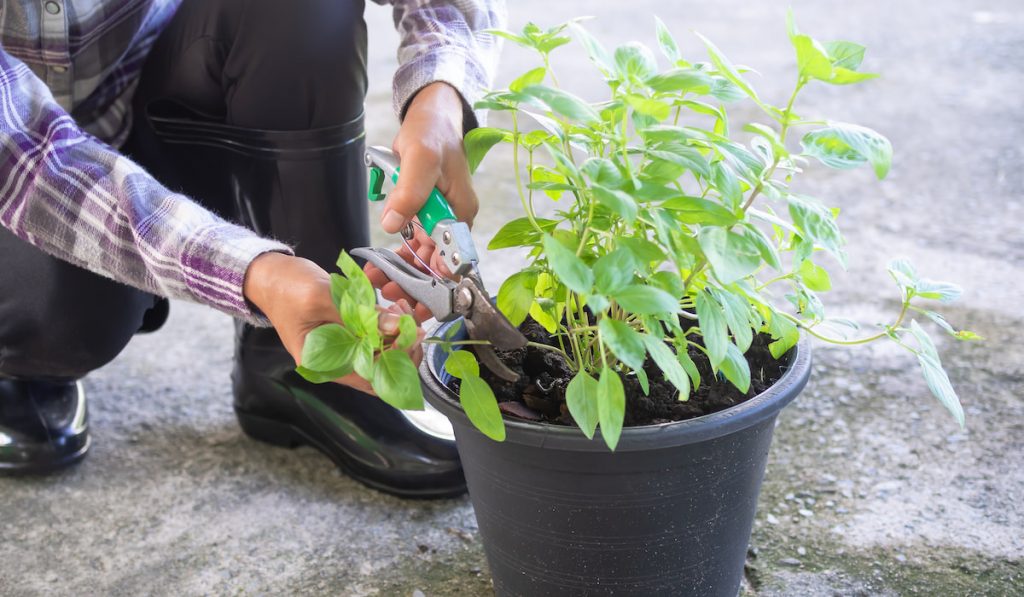
Will Basil Grow Back After You Cut It?
Basil will grow back after you cut it. Most plants do not like being heavily pruned. However, basil is an exception because heavy pruning increases leaf production in basil plants.
When you clip the stems of a basil plant, you force a new set of leaves to grow, doubling production on each one of the stems.
While the stems grow, you can also pinch them back to further double the basil production.
How Do You Trim/Harvest Basil so It Keeps Growing
Follow these tips to trim/harvest basil so it keeps growing:
- When trimming or harvesting basil, you may use herb snips, hand pruners, or your fingers. You can use your fingers to cut back the top shoots of a basil plant or pinch flower buds. But if you intend to cut the plant back hard, you will need a sharp pruner to avoid tearing the stems.
Using sharp pruners can help reduce the chances of damage to the plant. This way, they will not get inoculated with disease pathogens. - To begin harvesting, cut back the individual branches or stems above the intersection where the side shoots are located. Ensure not to leave long branch stubs above the intersection. Regrowths typically emerge from the side shoots, and within 1 or 2 weeks, the plant will be ready for harvest again.
- Harvest the basil once the seeds sprout, and you notice the second set of leaves. From that moment until the first flower buds appear, they will grow tender and lush foliage. When harvesting, start with a few basil leaves at a time. Later you can clip stems at the first or second branch intersection beneath the tips of the branches.
- Gradually remove 10-15% of the overall foliage every time you harvest. Harvesting at this early stage is important because it trains the plant to grow bushy and full. Harvesting young basil leaves also delays the plant from maturing.
- The first flower buds of basil begin to appear when it is about 12 inches tall. Starting with the budded tips, cut back the stems to the third and fourth side shoots. Trim about 30% of the overall foliage on the plants with buds.
By removing the flowers, you are keeping the prepubescent state of the herb intact.
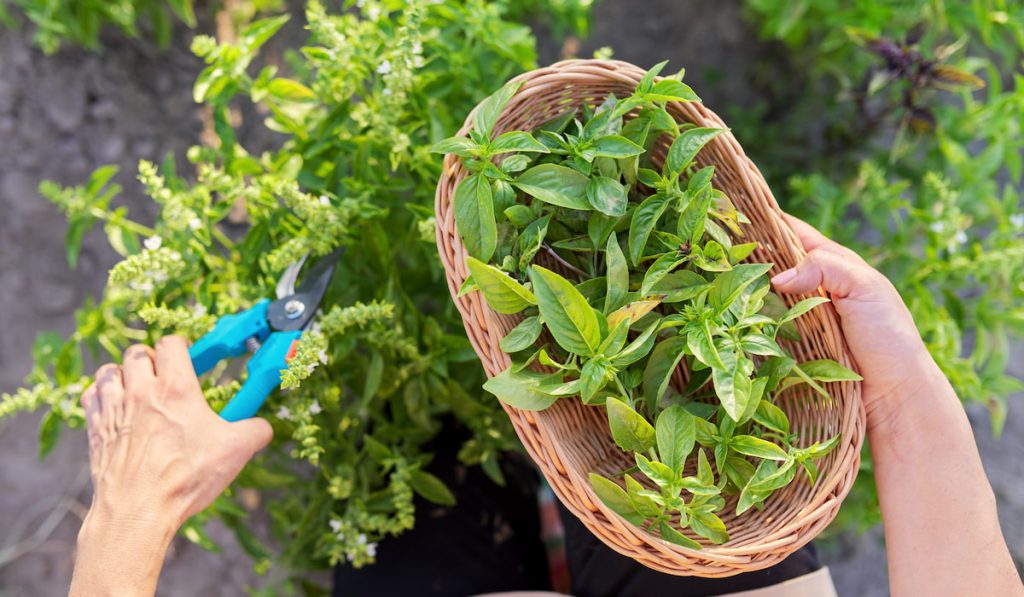
How Far Can You Cut Basil Back?
When pruning basil plants, never trim off too many stems. At most, you should trim to just above the lowest two sets of leaves.
Then after four weeks, when the plant has produced its third set of leaves, you may cut back again.
Do You Cut Basil Back in the Winter?
You do not cut back basil in the winter. Basil is frost-sensitive, and once the temperature drops, the leaves will turn brown.
If you grow basil under unregulated conditions, you must cut it back before the first frost of the winter arrives. Failure to do so will cause you to lose your entire yield.
Final Take
Pruning basil regularly is ideal, and it ensures the plant grows back full and bushy.
Nevertheless, when pruning, stay away from the set of leaves at the base of the plant. These leaves serve as the food source of the plant. So, without them, the plants may die.
Resources
- https://www.gardeningknowhow.com/edible/herbs/basil/pruning-back-basil-plants.htm
- https://www.finegardening.com/article/basil-basics
- https://savvygardening.com/how-to-trim-basil/
- https://www.plantssparkjoy.com/prune-basil/
- https://herbswithin.com/cutting-back-basil/
- https://www.chowhound.com/food-news/55234/how-to-harvest-basil-prune-it-so-it-keeps-growing-all-season/

